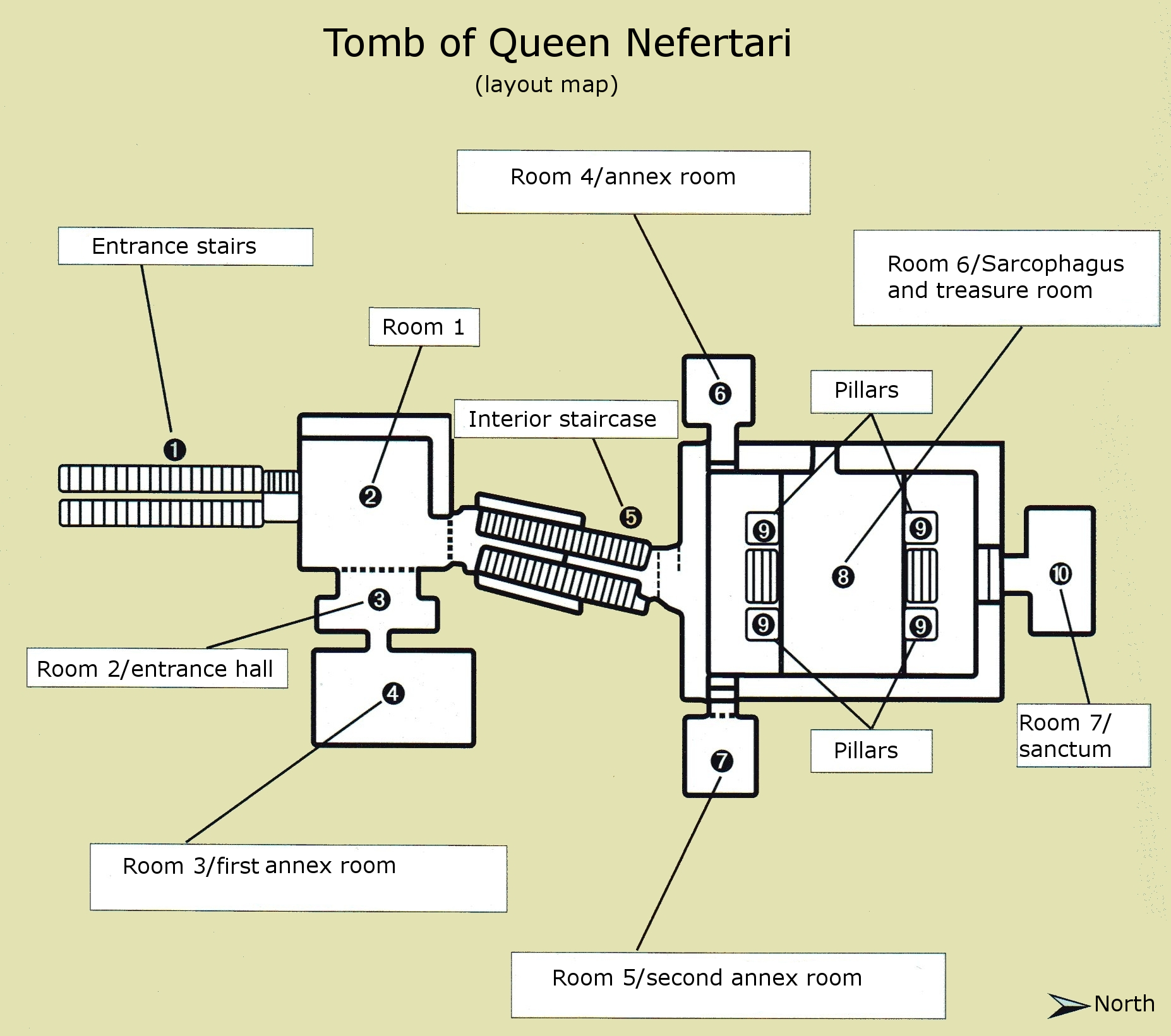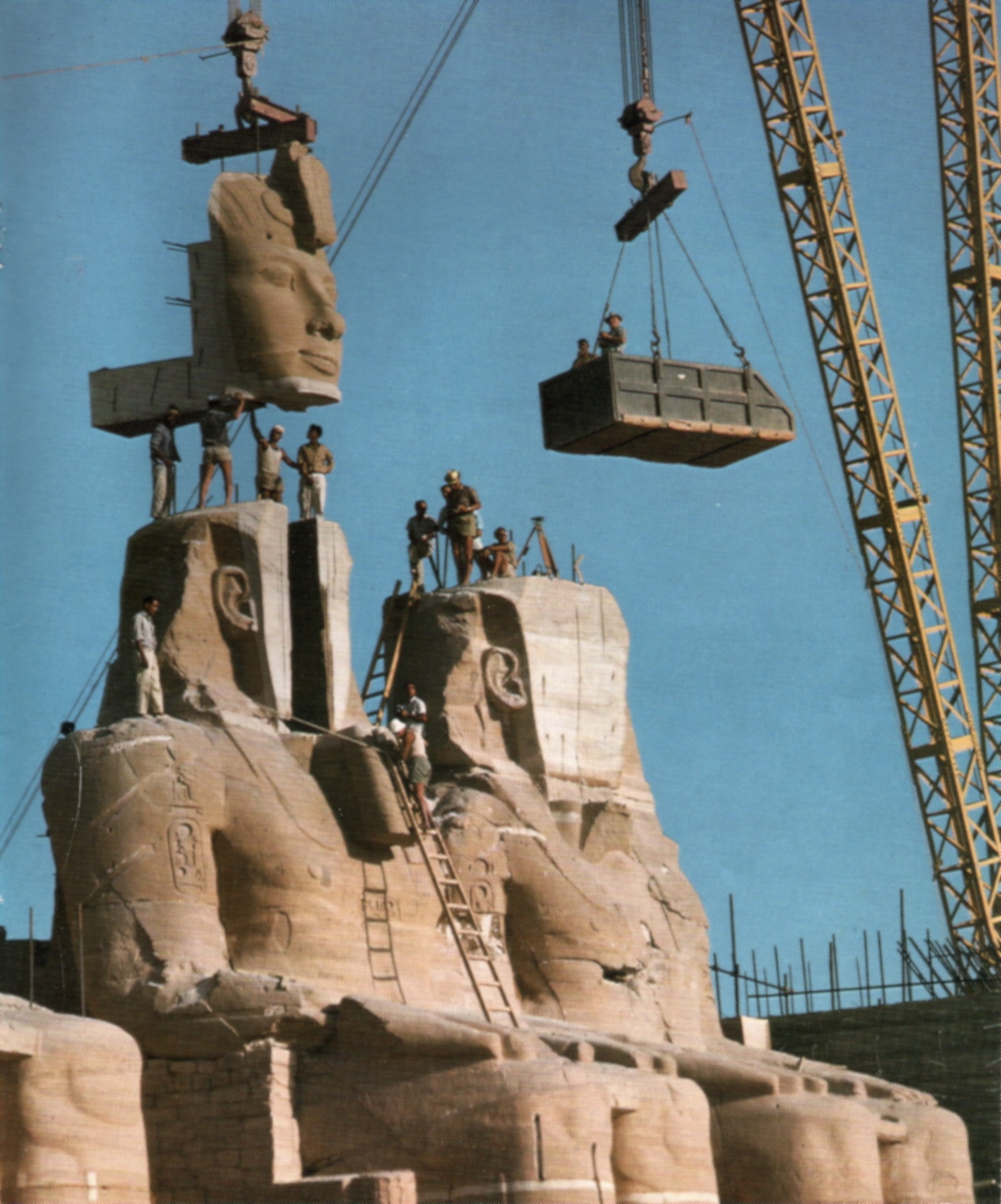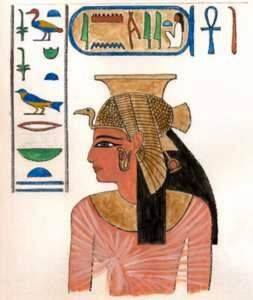|
Nefertari
Nefertari, also known as Nefertari Meritmut, was an Egyptian queen and the first of the Great Royal Wife, Great Royal Wives (or principal wives) of Ramesses II, Ramesses the Great. She is one of the best known Egyptian queens, among such women as Cleopatra VII, Cleopatra, Nefertiti, and Hatshepsut, and one of the most prominent not known or thought to have queen regnant, reigned in her own right. She was highly educated and able to both read and write hieroglyphs, a very rare skill at the time. She used these skills in her diplomatic work, corresponding with other prominent royals of the time. Her lavishly decorated tomb, QV66, is one of the largest and most spectacular in the Valley of the Queens. Ramesses also constructed a temple for her at Abu Simbel next to his colossal monument there. Translation of name There are different interpretations of the meaning of the name Nefertari. Nefertari means 'beautiful companion' and Meritmut means 'Beloved of the goddess Mut'. Some sour ... [...More Info...] [...Related Items...] OR: [Wikipedia] [Google] [Baidu] [Amazon] |
QV66
QV66 is the tomb of Nefertari, the Great Wife of Pharaoh Ramesses II, in Egypt's Valley of the Queens. It was discovered by Ernesto Schiaparelli (the director of the Museo Egizio, Egyptian Museum in Turin) in 1904. Nefertari, which means "beautiful companion", was Ramesses II's favorite wife; he went out of his way to make this obvious, referring to her as "the one for whom the sun shines" in his writings, built the Temple of Hathor at Abu Simbel to idolize her as a deity, and commissioned portraiture wall paintings. In the Valley of the Queens, Nefertari's tomb once held the mummified body and representative symbolisms of her, consistent with most Egyptian tombs of the period. Now, everything had been looted except for two thirds of the 5,200 square feet of wall paintings. For what still remains, these wall paintings characterized Nefertari's character. Her face received particular attention to emphasize her beauty, especially the shape of her eyes, the blush of her cheeks, and her ... [...More Info...] [...Related Items...] OR: [Wikipedia] [Google] [Baidu] [Amazon] |
Abu Simbel
Abu Simbel is a historic site comprising two massive Rock-cut architecture, rock-cut Egyptian temple, temples in the village of Abu Simbel (village), Abu Simbel (), Aswan Governorate, Upper Egypt, near the border with Sudan. It is located on the western bank of Lake Nasser, about southwest of Aswan (about by road). The twin temples were originally carved out of the mountainside in the 13th century BC, during the Nineteenth Dynasty of Egypt, 19th Dynasty reign of the Pharaoh Ramesses II. Their huge external rock relief figures of Ramesses II have become iconic. His wife, Nefertari, and children can be seen in smaller figures by his feet. Sculptures inside the Great Temple commemorate Ramesses II's heroic leadership at the Battle of Kadesh. The complex was Structure relocation, relocated in its entirety in 1968 to higher ground to avoid it being submerged by Lake Nasser, the Aswan Dam reservoir. As part of International Campaign to Save the Monuments of Nubia, an artificia ... [...More Info...] [...Related Items...] OR: [Wikipedia] [Google] [Baidu] [Amazon] |
Rameses II
Ramesses II (sometimes written Ramses or Rameses) (; , , ; ), commonly known as Ramesses the Great, was an Egyptian pharaoh. He was the third ruler of the Nineteenth Dynasty. Along with Thutmose III of the Eighteenth Dynasty, he is often regarded as the greatest, most celebrated, and most powerful pharaoh of the New Kingdom, which itself was the most powerful period of ancient Egypt. He is also widely considered one of ancient Egypt's most successful warrior pharaohs, conducting no fewer than 15 military campaigns, all resulting in victories, excluding the Battle of Kadesh, generally considered a stalemate. In ancient Greek sources, he is called Ozymandias, derived from the first part of his Egyptian-language regnal name: . Ramesses was also referred to as the "Great Ancestor" by successor pharaohs and the Egyptian people. For the early part of his reign, he focused on building cities, temples, and monuments. After establishing the city of Pi-Ramesses in the Nile Delta, h ... [...More Info...] [...Related Items...] OR: [Wikipedia] [Google] [Baidu] [Amazon] |
Ramesses II
Ramesses II (sometimes written Ramses or Rameses) (; , , ; ), commonly known as Ramesses the Great, was an Pharaoh, Egyptian pharaoh. He was the third ruler of the Nineteenth Dynasty of Egypt, Nineteenth Dynasty. Along with Thutmose III of the Eighteenth Dynasty of Egypt, Eighteenth Dynasty, he is often regarded as the greatest, most celebrated, and most powerful pharaoh of the New Kingdom of Egypt, New Kingdom, which itself was the most powerful period of ancient Egypt. He is also widely considered one of ancient Egypt's most successful warrior pharaohs, conducting no fewer than 15 military campaigns, all resulting in victories, excluding the Battle of Kadesh, generally considered a stalemate. In Ancient Greek literature, ancient Greek sources, he is called Ozymandias, derived from the first part of his Egyptian-language regnal name: . Ramesses was also referred to as the "Great Ancestor" by successor pharaohs and the Egyptian people. For the early part of his reign, he focu ... [...More Info...] [...Related Items...] OR: [Wikipedia] [Google] [Baidu] [Amazon] |
Meryatum
Meryatum (“Beloved of Atum”) was an ancient Egyptian prince and High Priest of Re, the son of Pharaoh Ramesses II and Queen Nefertari. He is shown as 16th on the processions of princes, and is likely to have been the last child born to Ramesses and Nefertari (after Amun-her-khepeshef, Pareherwenemef, Meritamen, Henuttawy and Meryre). He is depicted in the Smaller Abu Simbel temple, dedicated to Nefertari. Inscriptions at Karnak and elsewhere show Nefertari was his mother. He visited Sinai in the second decade of his father's reign, and later in that decade was appointed as High Priest of Ra in Heliopolis, a position he held for the next twenty years. Two of his statues are now in Berlin and a stela belonging to him is in Hildesheim. An ostrakon mentions work on his tomb and that of Isetnofret; it implies he was buried in the area of the Valley of the Queens, though it is also possible he was buried in KV5, the tomb built for the sons of Ramesses, since a fragment ... [...More Info...] [...Related Items...] OR: [Wikipedia] [Google] [Baidu] [Amazon] |
Meritamen
Meritamen (also spelled ''Meritamon'', ''Meritamun, Merytamen, Merytamun, Meryt-Amen''; ancient Egyptian: ''Beloved of Amun'') was a daughter and later Great Royal Wife of Pharaoh Ramesses the Great, born by his first queen Nefertari. Family Meritamen was a daughter of Ramesses and his first Great Royal Wife, Nefertari. She appears as the fourth daughter in the list of daughters in Abu Simbel and had at least four brothers: Amun-her-khepeshef, Pareherwenemef, Meryre and Meryatum, as well as a sister named Henuttawy. Meritamen may have had more brothers and sisters, but these five are known from the facade of Queen Nefertari's temple in Abu Simbel. Her eldest brother, Amun-her-khepeshef, was the crown prince until at least year 25 of the reign of their father. Prince Prehirwenemef is known to have served in the army and is depicted in the battle scenes from Kadesh. The youngest sibling known to us, Prince Meryatum, would later become High Priest of Re in Heliopolis. ... [...More Info...] [...Related Items...] OR: [Wikipedia] [Google] [Baidu] [Amazon] |
Eighteenth Dynasty Of Egypt
The Eighteenth Dynasty of Egypt (notated Dynasty XVIII, alternatively 18th Dynasty or Dynasty 18) is classified as the first dynasty of the New Kingdom of Egypt, the era in which ancient Egypt achieved the peak of its power. The Eighteenth Dynasty spanned the period from 1550/1549 to 1292 BC. This dynasty is also known as the Thutmoside Dynasty for the four pharaohs named Thutmose. Several of Egypt's most famous pharaohs were from the Eighteenth Dynasty, including Tutankhamun. Other famous pharaohs of the dynasty include Hatshepsut (c. 1479 BC–1458 BC), the longest-reigning woman pharaoh of an indigenous dynasty, and Akhenaten (c. 1353–1336 BC), the "heretic pharaoh", with his Great Royal Wife, Nefertiti. The Eighteenth Dynasty is unique among Egyptian dynasties in that it had two Queen regnant, queens regnant, women who ruled as sole pharaoh: Hatshepsut and Neferneferuaten, usually identified as Nefertiti. History Early Dynasty XVIII Dynasty XVIII was founded by Ahmo ... [...More Info...] [...Related Items...] OR: [Wikipedia] [Google] [Baidu] [Amazon] |
Great Royal Wife
Great Royal Wife, or alternatively, Chief King's Wife () is the title that was used to refer to the Queen consort, principal wife of the pharaoh of Ancient Egypt, who served many official functions. Description While most ancient Egyptians were monogamy, monogamous, a male pharaoh would have had other, lesser wives and concubines in addition to the Great Royal Wife. This arrangement would allow the pharaoh to enter into diplomatic marriages with the daughters of allies, as was the custom of ancient kings. In the past the order of succession in Ancient Egypt was thought to pass through the royal women. This theory, referred to as the Heiress Theory, has been rejected regarding the Eighteenth Dynasty ever since a 1980s study of its royalty.O'Connor and Cline (Editors), Amenhotep III: Perspectives on his reign, pg 6 The throne likely passed to the eldest living son of those pharaohs. The mother of the heir to the throne was not always the Great Royal Wife, but once a pharaoh was c ... [...More Info...] [...Related Items...] OR: [Wikipedia] [Google] [Baidu] [Amazon] |
Henuttawy (19th Dynasty)
Henuttawy ("Mistress of the Two Lands") was an ancient Egyptian princess of the 19th Dynasty. Biography Henuttawy was a daughter of Pharaoh Ramesses II and the Great Royal Wife Nefertari and half-sister of Merneptah. She is seventh on the lists of Ramesses's daughters and the second of two daughters whose mother is certain to have been Nefertari. Her statue stands in the small Abu Simbel temple, built for Nefertari. The children of Nefertari are usually identified on the basis of this temple: the princes Amunherkhepeshef, Pareherwenemef, Meryre and Meryatum and the princesses Meritamen and Henuttawy. Henuttawy is not depicted on the facade of the large Abu Simbel temple, where the first two sons and the six eldest daughters of Ramesses are shown, along with Nefertari and Queen Mother Tuya. Tomb QV73 Her tomb in the Valley of the Queens, QV73 is not far from those of other members of Ramesses's family (QV68 – Meritamen, QV71 – Bintanath, QV75 – Henutmire); it is between ... [...More Info...] [...Related Items...] OR: [Wikipedia] [Google] [Baidu] [Amazon] |
Valley Of The Queens
The Valley of the Queens is a site in Egypt, in which queens, princes, princesses, and other high-ranking officials were buried from roughly 1560 BC to 1130 BC. Pharaohs were buried in the Valley of the Kings. The Valley of the Queens was known anciently as ''Ta-Set-Neferu'', which has a double meaning of "The Place of Beauty" and/or "the Place of the Royal Children". Excavation of the tombs at the Valley of the Queens was pioneered by Ernesto Schiaparelli and Francesco Ballerini in the early 1900s. The Valley of the Queens consists of the main wadi, which contains most of the tombs, along with the Valley of Prince Ahmose, the Valley of the Rope, the Valley of the Three Pits, and the Valley of the Dolmen. The main wadi contains 91 tombs and the subsidiary valleys add another 19 tombs. The burials in the subsidiary valleys all date to the Eighteenth dynasty of Egypt, 18th Dynasty.Demas, Martha, and Neville Agnew, eds. 2012. Valley of the Queens Assessment Report: Volume 1. Los Angel ... [...More Info...] [...Related Items...] OR: [Wikipedia] [Google] [Baidu] [Amazon] |
Amun-her-khepeshef
Amun-her-khepeshef (died c. 1254 BC; also Amonhirkhopshef, Amun-her-wenemef and Amun-her-khepeshef A) was the firstborn son of Pharaoh Ramesses II and Queen Nefertari. Name He was born when his father was still a co-regent with Seti I. He was originally called ''Amun-her-wenemef'' ("Amun Is with His Right Arm"). He changed his name to ''Amun-her- khepeshef'' ("Amun Is with His Strong Arm") early in his father's reign.Aidan Dodson & Dyan Hilton, ''The Complete Royal Families of Ancient Egypt'', Thames & Hudson (2004), p.170 He appears to have changed his name once again to ''Seth-her-khepeshef'' around Year 20 of Ramesses II. Seth-her-khepeshef was formerly thought to be another son of Ramesses II. Biography Amun-her-khepeshef was first in line to inherit the throne of Egypt from his father, Ramesses II's. He died before inheriting his father's titles 25 years into his father's rule.Dodson & Hilton, p.173 Ramesses B, Ramesses II's second oldes ... [...More Info...] [...Related Items...] OR: [Wikipedia] [Google] [Baidu] [Amazon] |
Baketmut
Baketmut (, "Handmaid of Mut") was an ancient Egyptian princess of the Nineteenth Dynasty. She was the second daughter of Pharaoh Ramesses II. Her statue stands at the feet of one of her father's colossi at the Great Temple of Abu Simbel. She is depicted as an adult, with an uraeus on her head. She is also depicted inside the temple, in a procession of the nine eldest daughters of the pharaoh, where she is the second in line, behind Bintanath. It has been proposed that her mother was Queen Nefertari, but she is nowhere named as such. She is not shown on the facade of the Small Temple of Abu Simbel, which was built for Nefertari and decorated with statues of princes and princesses who are likely to have been her children.Dodson, op.cit., p.167 Her tomb is not known. See also * List of children of Ramesses II The Ancient Egyptian Pharaoh Ramesses II had a large number of children: between 48 and 50 sons, and 40 to 53 daughters – who he had depicted on several monuments. Ramesse ... [...More Info...] [...Related Items...] OR: [Wikipedia] [Google] [Baidu] [Amazon] |







